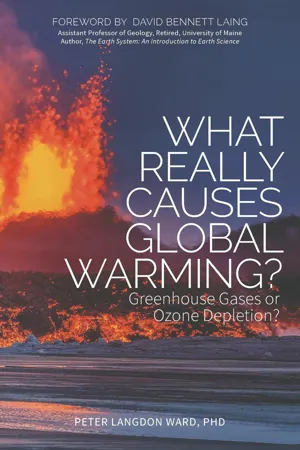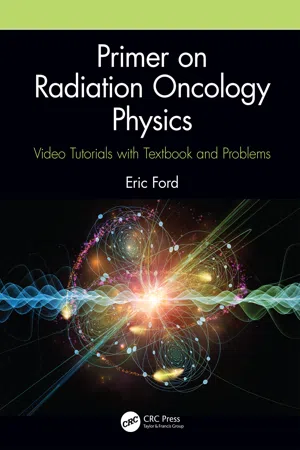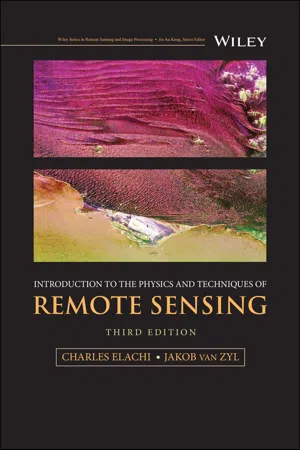Physics
Energy and Frequency Relationship
The energy and frequency relationship in physics refers to the direct proportionality between the energy of a photon and its frequency. This relationship is described by the equation E = hf, where E is the energy, h is Planck's constant, and f is the frequency. As frequency increases, so does the energy of the photon, and vice versa.
Written by Perlego with AI-assistance
Related key terms
Related key terms
1 of 4
Related key terms
1 of 3
6 Key excerpts on "Energy and Frequency Relationship"
- eBook - ePub
What Really Causes Global Warming?
Greenhouse Gases or Ozone Depletion?
- Peter Langdon Ward(Author)
- 2015(Publication Date)
- Morgan James Publishing(Publisher)
325 The dirty secret is, however, that we really do not yet understand precisely what a photon is (or if it even exists), or what an electron is or, for that matter, how an atom is actually constructed. We do have a lot of ideas and theories that seem to work fairly well—or at least we think they do.Energy Equals Frequency Times a ConstantMost physicists should agree that E=hν, commonly called the Planck-Einstein relation ,326 correctly describes the energy of an atomic/molecular harmonic oscillator. Note that mass is not included in this equation. Mass plays a role in determining the natural frequencies of the oscillations of the bonds holding matter together, but there is no net change in mass, so that the change in energy is independent of mass. This is entirely consistent with the concept of electromagnetic energy as a frequency field—much like a gravity field—surrounding the emitting object rather than as a “shower of light” transmitting waves or massless particles of energy outward through space and delivering them to a receiving object. Rather, it is simply the receiving object’s molecular structure and its position within the frequency field that determines the resonant response of the chemical bonds in the object, whose consequent vibrations generate energy locally, with no inter-object energy transfer required. This concept may not make sense to those traditional physicists used to thinking of light waves, photons, mechanical oscillators with springs, pendulums, balls rolling in curved bowls, and such, but it begins to make a lot of sense when you think of force fields and very high-frequency microscopic oscillations about a minimum in energy between attractive and repulsive electrostatic forces, as shown in Figure 4.4 on page 51 .Now increasing the frequency—and hence the energy—of a bond’s oscillation will at some point (Emax in Figure 4.4 on page 51 ) break the bond. There is no collision required. More importantly, this explains why, in the photoelectric effect, no amount of radiation can dislodge an electron until some minimum frequency, and some minimum amplitude, of light is reached. Such thinking about the energy required to break a bond or dislodge an electron helps us understand, quite well, photoionization , photodissociation , and the structure of Earth’s atmosphere, as described in Chapter 5 - eBook - ePub
- Zygmunt (Karol) Gryczynski, Ignacy Gryczynski(Authors)
- 2019(Publication Date)
- CRC Press(Publisher)
Color is related to the period (duration of time of one cycle of a wave) of the electromagnetic radiation; equivalently, color (wavelength) is related to the frequency or energy of the light wave. Figure 1-1.1 shows a typical schematic of a light wave. The electromagnetic field is depicted as orthogonal electric and magnetic fields E and B, respectively. It should be noted that E and B are rarely drawn to scale as the amplitude of B is roughly 1/ c the size of that of E. In Figure 1-1.1, the wave is traveling in the z ⌢ -direction, the electric field points in the x ^ -direction, and the magnetic field points in the y ⌢ -direction. It is important to notice that the electric field, magnetic field, and the direction of propagation are all orthogonal (akin to the “right-hand rule”). The electric field of light is given as: FIGURE 1-1.1 A light wave and its comparison with a typical chromophore. E (x, t) = E 0 e ^ sin(k x + ω t + φ) (1-1.1) E 0 is the maximum intensity of the electric field or the amplitude of the electric vector and e ^ is the directional unit vector. This directional unit vector indicated allows for the direction of the electric field to point in any arbitrary direction. In the example in Figure 1-1.1, e ^ = x ^ ; one may also see E 0, a constant vector, in place of E 0 x ^. In this case, E 0 = | E 0 |, and e ^ = E 0 | E 0 |. Thus, Equation 1-1.1 becomes: E (x, t) = E 0 sin(k x + ω t + φ) (1-1.2) Thus, the intensity of this light ray is: I = c n ε 0 2 | E | 2 = c n ε 0 2 E 0 2 (1-1.3) where c is the speed of light, n is the refractive index of the medium the light is traveling in, and ε 0 is the permittivity of vacuum. Light sources such as lamps and lasers are often described by the power, P of the light they emit: P = ∫ I d S (1-1.4) where S is the surface area of the light used, usually the focused area of the lamp or laser is called the spot size. Equation (1-1.4) often simplifies to the product of an intensity and an area P = I × S - eBook - ePub
Energy Medicine - E-Book
The Scientific Basis
- James L. Oschman(Author)
- 2015(Publication Date)
- Churchill Livingstone(Publisher)
Figure 3.1 ). When applied at the appropriate intervals, the pushes cause the child to swing higher and higher. Physicists refer to this arrangement as a pendulum. Anyone who has pushed a child on a swing knows how important it is to apply the push at the correct time so that the swinging will go higher and higher. A push at the wrong time will take energy away from the pendulum and slow the swinging. There are equations available to calculate the period or frequency of a pendulum as a function of the length of the wire and the acceleration due to gravity. The weight of the swinging object is not a factor in the equations.Figure 3.1 A child on a swing (A) provides a good example of an oscillating system in which energy shifts between two forms. Physicists refer to this arrangement as a pendulum (B). At the top of the swing, all of the energy is in the form of gravitational potential energy, i.e., the energy available to the object as a result of its position in relation to the gravity field. At the bottom of the swing, all of the energy is in the form of kinetic energy, or the energy of motion. The energy in the system oscillates back and forth between these two different forms.The example shown in Figure 3.1 is instructive because it illustrates resonant interactions between two objects, the pusher and the child on the swing. It also illustrates energy being converted from one form to another. Physicists refer to the energy of motion as kinetic energy. At the base of the child’s swing, all of the energy is kinetic, whereas at the top of the swing there is no kinetic energy – motion ceases for an instant. The physicist describes that moment as an instant when all of the energy is in the form of gravitational potential energy – the energy that will restart the swinging.Electromagnetism employs similar principles to enable transmission of energy and information over long distances.Electricity and Magnetism Combined: The Electromagnetic Field
Electromagnetic interactions taking place within the human body, between the body and its environment, and between a therapist and his or her patient are extremely important but have not received adequate attention. Molecules can behave as resonant antennas, meaning that they can radiate and absorb electromagnetic fields. This concept is inescapable. It is based on fundamental laws of physics but is not widely discussed by biomedical researchers. Many alternative therapies involving energy can seem peculiar from superficial observation, but they are easily explained by electromagnetic interactions between molecules and, especially, arrays of molecules within living systems. All of the conceptual pieces are in place, and they are based on substantial physics that will be described next. This section also provides the basis for an understanding of electromagnetic communication and control systems in the living body to be described Chapter 9 - eBook - ePub
Sustainable Energy Transitions
Socio-Ecological Dimensions of Decarbonization
- Dustin Mulvaney(Author)
- 2020(Publication Date)
- Palgrave Macmillan(Publisher)
black body radiation demonstrates when iron is placed in a fire.DefinitionThe energy of a photon is represented as (E ). Plank’s constant (f ) and the speed of light (c ) are variables in the determination of energy, which ranges depending on the wavelength (λ) of light .As different photons have different energies, it is not clear whether any given electron has enough energy to excite the electron without knowing the bandwidth. Energy and bandwidth are inversely proportional. This is where the concept of a bandgap is critical to understanding the materials needed for photovoltaics. The band gap is the difference between available energy states for an electron. Some materials have better bandgaps corresponding to the sun’s black-body radiation . If the photon has enough energy to raise the electron’s energy above the bandgap, it will be able to move into the electric circuit. If there is not enough energy, the electron will relax (◘ Fig. 2.3 ). The Fermi energy is the hypothetical middle energy level, where is it 50% odds of finding the electron.A diagram illustrates how the energy flows from the valence band to the conduction band for the metal, semiconductor, and insulator, with band gaps.Fig. 2.3Bandgaps of semiconductor materials used in photovoltaicsThe science of color is quite spectacular given the diversity of species that “see” and the various different ways the light spectrum and matter interact (◘ Fig. 2.4 ).A wheel diagram with red, orange, yellow, green, turquoise, blue, navy, and violet colors with their corresponding wavelengths.Fig. 2.4Color wheel of light - eBook - ePub
Primer on Radiation Oncology Physics
Video Tutorials with Textbook and Problems
- Eric Ford(Author)
- 2020(Publication Date)
- CRC Press(Publisher)
1Basic Physics
1.1 Waves and Particles
1.1.1 Electromagnetic Waves
Electromagnetic waves come in many forms, e.g. radio waves, lights, and X-rays. In 1870, James Clerk Maxwell developed a formalism to describe these electromagnetic waves in which the changing magnetic field creates an electric field and vice versa to form a self-sustaining wave that propagates at a speed given the symbol c , the speed of light, which is 3·108 m/s in a vacuum. Three properties describe waves: the speed, c , wavelength, λ , and frequency, ν (sometimes written as f ). See Figure 1.1.1 . These are related byFIGURE 1.1.1 Properties of electromagnetic waves.c = λ ⋅ ν(1.1) The units are c (m/s), λ (m), and frequency, ν (1/s given the special unit Hertz, Hz). The type of wave is determined by the wavelength (or equivalently the frequency), see Figure 1.1.1 . Note that optical light occupies a relatively narrow range of the spectrum from 400 to 700 nanometers (nm).At very short wavelengths electromagnetic waves are X-rays. X-rays were first produced and characterized by Wilhelm Roentgen in 1895. They have a wavelength similar to the size of the atom itself. It is more common to describe these waves by their energy instead of their wavelength. The energy, E , is given byE = h ν(1.2) Here h is Planck’s constant, a fundamental constant of nature whose value is 6.626·10−34 m2 kg/s. A common unit for energy useful for medical physics applications is the electron-volt, eV, which is the energy gained by one electron moving through a potential of one volt. X-rays and particles in medical physics applications often have energies in keV to MeV range.1.1.2 Particles
The various particles of importance for medical physics applications are shown in Table 1.1 The electron was first discovered by J.J. Thompson in 1897. Somewhat later, in 1908, Robert A. Millikan and Harvey Fletcher performed a series of experiments which showed that the charge of the electron is quantized, i.e. is present discrete amounts. These experiments involved suspending oil drops in an electric field (see the video for further background). The charge of the electron, we now know, is 1.602·10−19 - Charles Elachi, Jakob J. van Zyl(Authors)
- 2021(Publication Date)
- Wiley(Publisher)
2 Nature and Properties of Electromagnetic Waves2.1 Fundamental Properties of Electromagnetic Waves
Electromagnetic energy is the means by which information is transmitted from an object to the sensor. Information could be encoded in the frequency content, intensity, or polarization of the electromagnetic wave. The information is propagated by electromagnetic radiation at the velocity of light from the source directly through free space, or indirectly by reflection, scattering, and reradiation to the sensor. The interaction of electromagnetic waves with natural surfaces and atmospheres is strongly dependent on the frequency of the waves. Waves in different spectral bands tend to excite different interaction mechanisms such as electronic, molecular, or conductive mechanisms.2.1.1 Electromagnetic Spectrum
The electromagnetic spectrum is divided into a number of spectral regions. For the purpose of this text, we use the classification illustrated in Figure 2.1 .The radio band covers the region of wavelengths longer than 10 cm (frequency less than 3 GHz). This region is used by active radio sensors such as imaging radars, altimeters, and sounders, and, to a lesser extent, passive radiometers.The microwave band covers the neighboring region, down to a wavelength of 1 mm (300 GHz frequency). In this region, most of the interactions are governed by molecular rotation, particularly at the shorter wavelengths. This region is mostly used by microwave radiometers/spectrometers and radar systems.The infrared band covers the spectral region from 1 mm to 0.7 μm. This region is sometimes subdivided into subregions called submillimeter, far infrared, thermal infrared, and near infrared. In this region, molecular rotation and vibration play an important role. Imagers, spectrometers, radiometers, polarimeters, and lasers are used in this region for remote sensing. The same is true in the neighboring region, the visible region (0.7–0.4 μm) where electronic energy levels start to play a key role.
Index pages curate the most relevant extracts from our library of academic textbooks. They’ve been created using an in-house natural language model (NLM), each adding context and meaning to key research topics.
Explore more topic indexes
Explore more topic indexes
1 of 6
Explore more topic indexes
1 of 4





